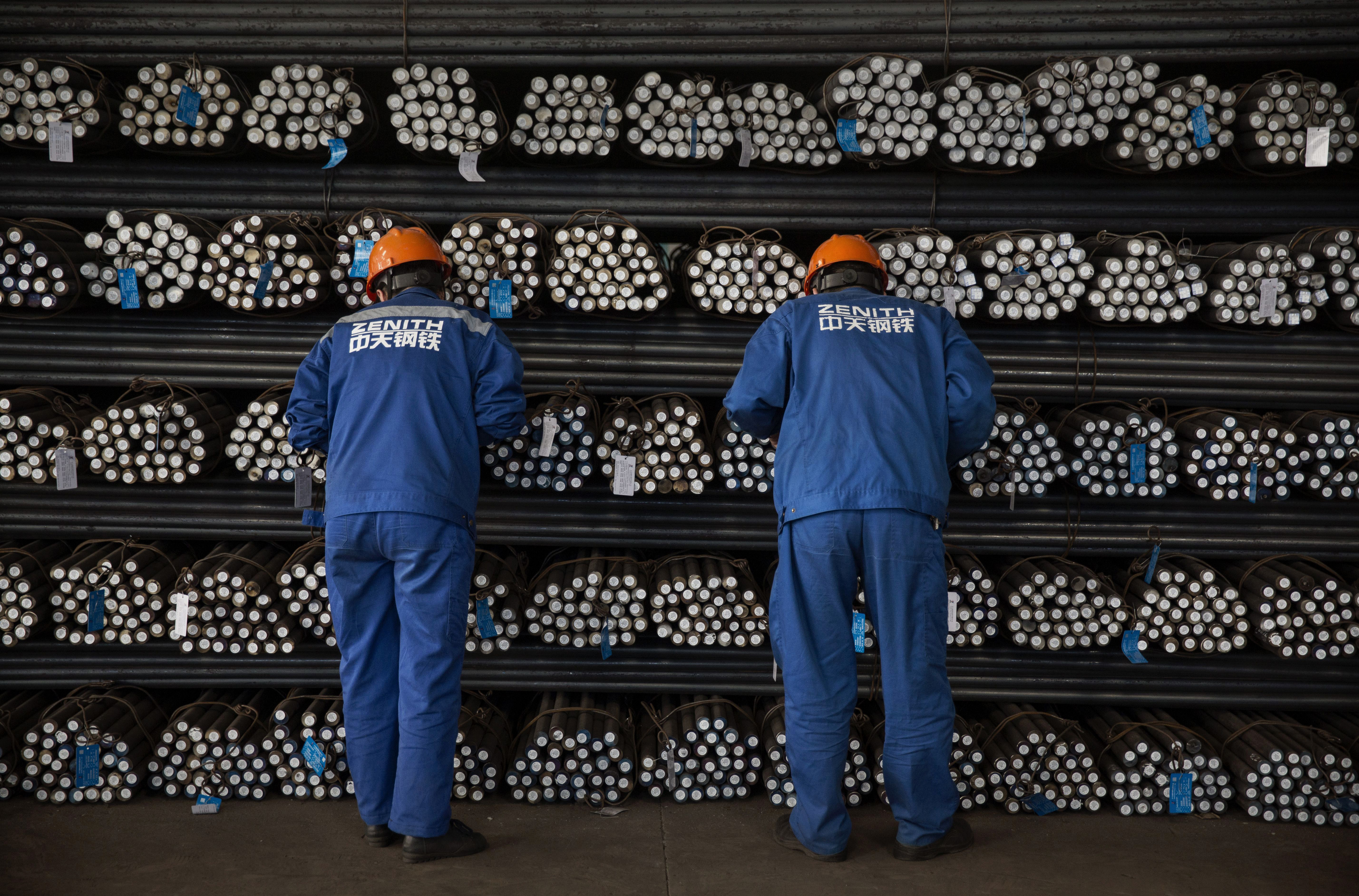Published 15 December 2016
China argues it should be granted "market economy status" by all WTO Members. But American producers of industrial commodities such as steel say China is not operating on market principles.
What’s a “Non-market Economy”?
Under U.S. law, the U.S. Department of Commerce can determine that a foreign country is not operating on market principles when setting the price of certain goods or services, and therefore be designated a “non-market economy” or NME. The price of final goods exported by non-market economies may not reflect fair market value, giving those products an advantage over other exports to the United States as well as an advantage over goods produced in the United States.
Let’s take an oversimplified example. Meet Suzy, a budding entrepreneur. Suzy wants to grab as many thirsty customers as possible so she decides to charge 10 cents, cutting way into her profit, maybe even foregoing a profit to gain market share. But other kids are charging 25 cents to clear a profit after buying their ingredients.
The cost of inputs and production become a key consideration in cases where U.S. companies ask the Department of Commerce to make decisions about whether a country —such as China — is dumping product into the United States.
Okay, so what’s dumping?
“Dumping” is also a term with specific meaning. It’s a form of international price discrimination where a product is introduced into commerce in another country at less than its “normal value,” typically the price it would be sold for in the home country.
Dumping is not prohibited or disciplined by the World Trade Organization (WTO). The WTO Anti-Dumping Agreement provides a framework of substantive and procedural rules for how WTO Members may counteract or “remedy” dumping through “anti-dumping” measures, usually in the form of “anti-dumping duties” on the imported product. And, while trade remedy laws apply to imports, it’s important to recall that selling “below cost” happens frequently in a market economy, for all sorts of good reasons. For instance, when a firm introduces a new product with a large marketing expense but small initial sales, it is selling below cost. Net, if Suzy sells below cost but all her competitors are domestic sellers, there’s no problem. On the other hand, if Suzy is an importer, she could be accused of dumping.
All about that price
Calculating anti-dumping duties is a complex process, but in general, they are designed to offset the effects of selling below normal value (reminder – what it would be sold for in the home market) by increasing the price of the offending imports. If the country at issue is considered a non-market economy, the Department of Commerce will disregard the home market price when assessing the duty. Instead, it constructs a market-based normal value for the product based on prices and input costs from a market economy country that’s functioning at a similar level of economic development—what’s called a “proxy” country.
Using our example, Tobey is a competitor who protests Suzy’s price. She says Suzy is selling in her lemonade at less than it costs her to make it and to run her stand, allowing Suzy to undercut Tobey’s lemonade stand. To figure out what Suzy’s true costs are, Tobey suggests using Ben’s costs as a proxy since he buys his lemons and sugar at a grocery store in the same neighborhood as Suzy.
This non-market economy methodology almost always results in higher anti-dumping duties than cases where actual market costs are known. U.S. petitioners get multiple opportunities to propose the proxy country input prices, and in many cases, the exporters in question are not adequately responsive, rendering the U.S. petitioner’s input prices the default for determining additional duties.
In our case, Tobey claims the lemonade mix and sugar at Ben’s grocery store costs $3.25 and since Suzy didn’t tell us what she paid, that’s the cost we’ll now use to determine what her fair market price would be were she not selling the lemonade for less than what it cost her to make it. (By the way, Suzy’s parents wanted to help her earn money so they bought lemons and sugar for her lemonade stand. This is a subsidy, but it’s addresses by other laws and “countervailing duties”. )

China says time is up
China (and the world) just celebrated the 15th anniversary of its entry into the WTO. Fifteen years ago, China argued it should be considered a “market economy” for dumping determinations, given the reforms it committed to undertake as part of its accession to the WTO. China’s negotiators, however, didn’t persuade WTO Members.
WTO Members preserved their ability to apply non-market economy “tests” to China. For non-market economies and/or industry sectors and entities not subject to market conditions, they would continue to use alternate methodologies to calculate anti-dumping duties. Chinese industries have been subject to numerous anti-dumping measures over the years by the United States and other WTO Members applying NME methodologies under their own trade remedy laws. China is looking for relief.
What actually happens on December 11, 2016?
Here’s where WTO Members will disagree. Certain provisions in China’s protocol of accession were set to expire after fifteen years – December 11, 2016. Some argue the United States is obligated to provide market economy status to China and cease using the NME methodology. Others argue the “sunset” clause leaves in place the discretion to use NME methodology for producers under investigation regardless of whether China has market economy status (MES). The language is subject to interpretation and will most certainly become the subject of WTO litigation.
There is no automatic trigger in U.S. law that ends the use of NME methodology. But many have argued the U.S. will be out of compliance with its WTO obligations toward China if it does not make changes to its dumping procedures. The next U.S. anti-dumping proceeding involving imports from China will prompt China to seek a market economy determination from the Department of Commerce. If China is denied, it will likely sue the United States at the WTO.
Most countries already gave China market economy status
China is the subject of a high number of anti-dumping investigations globally, which is why China has worked to secure MES as part of its bilateral and regional agreements with individual WTO Members. They’ve had success with this approach.
Generally, countries in Latin America, Africa, Australia and Asia who are in a position of supplying commodities to China have already recognized it as a market economy. Among the countries that have implemented the decision to grant MES to China, only Australia and South Africa are major users of anti-dumping proceedings. Brazil made a political declaration recognizing China’s MES but has never legally implemented the decision.
But there are some big holdouts
The United States, European Union, Canada, Japan, Mexico and India all hold a legal presumption that China is an NME and currently maintain legal discretion in determining when this presumption will be lifted. Japan introduced a non-binding deadline to grant MES to China by December 2016, following a 2007 amendment of the Japanese guidelines for procedures relating to anti-dumping but has made no official commitment to automatically grant MES. In 2002, Canada introduced a similar legal deadline, but this was repealed in 2013.
The European Union is China’s number one trading partner. The European Union is sensitive to causing harm to its domestic industry but wants to ensure full WTO compliance and maintain a good relationship with China. The European Commission must come to a decision and propose a directive that would then have to be ratified by the European Parliament and the European Council. While the exact voting mechanism in the European Council (composed of heads of state from EU member nations) will not be known until the commission has proposed the law, it will likely require a majority rather than unanimity, pitting major commodity producing members against others that favor granting China MES.
American commodities have been hit hard

Photo by Kevin Frayer/Getty Images
American commodity sectors, particularly those producing industrial materials like steel, cement, and aluminum, have been leading opponents of granting China market economy status. They feel the heavy hand of the Chinese government, which they say offers cheap inputs to Chinese producers and incentivizes overcapacity. China’s aluminum production, for example, increased from 11 percent of global output in 2000 to more than 50 percent today.
A steep increase in production output may have been warranted when the demand for those materials was high and growing within China, but now there’s more being produced than demand warrants, and when subsidized Chinese commodities are exported around the world, it drives down prices to unsustainable levels. U.S. companies in these commodity sectors have experienced significant job losses as they curtail or shut down production.
Making Lemonade
While competitive pricing, even loss leaders, may be entirely common in market economies, in the case of globally traded commodities, below market prices causes everyone’s price to plummet. These are sectors that cannot easily make lemonade out of these lemons so they have asked the Department of Commerce to use its discretion in determining on a case-by-case basis whether market forces are at play or whether Chinese producers continue to benefit from a non-market economy.
The concept of making determinations on a case-by-case basis is an important one to consider. China was the subject of 55 percent of global anti-dumping cases in 2014. But in 2015, only around seven percent of China’s exports to the United States was actually subject to anti-dumping restrictions. That means as much as 93 percent of China’s annual exports — some $465 billion — was not subject to U.S. either antidumping or countervailing duties.
Resources:
Dive deeper with Chad Brown of the Peterson Institute in his December 2016 policy brief, Should the United States Recognize China as a Market Economy?
Watch an excellent and sharable short video produced by MetalMiner
Aluminum tells its own story here.
© The Hinrich Foundation. See our website Terms and conditions for our copyright and reprint policy. All statements of fact and the views, conclusions and recommendations expressed in this publication are the sole responsibility of the author(s).






